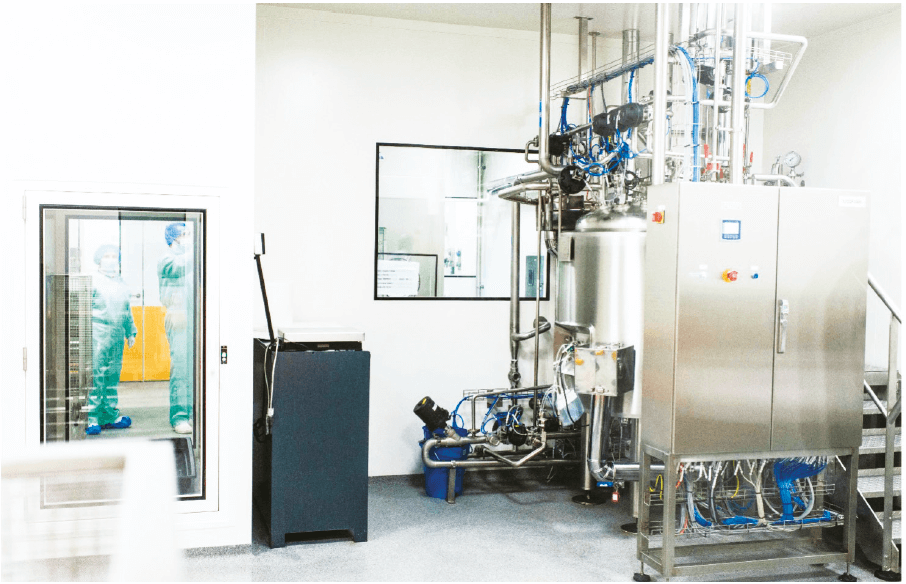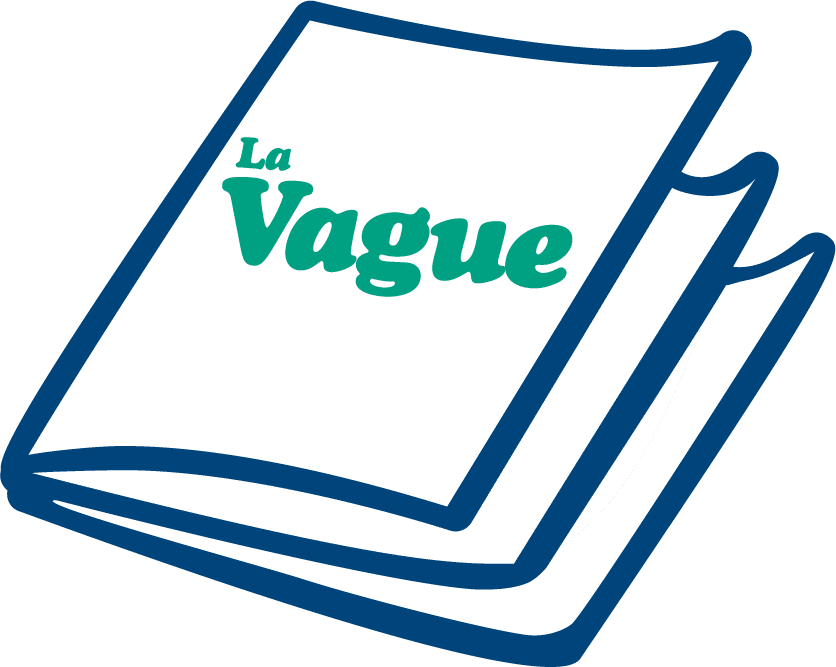Summary
- Quality Assurance & Production: impacts of the new GMP Annex 1.
- Should a visual inspection expert also be a vision system technical expert?
- Residual level of hydrogen peroxide present in isolators during sterility tests: What is the impact on the data generated?
- Advanced Therapy Medicinal Products based on bacteria.
- Supplier & End-User Disinfectant Qualification Comparison for Cleanrooms
- Feedback on the purchase of BFS fillers for a site specializing in PFS.
Quality Assurance & Production : impacts of the new GMP Annex 1.
Within a regulatory framework that gives prominence to closed systems, Pharmaplan is working on several projects for which it is studying solutions that aim to reduce human manipulations and the associated contamination risks as much as possible. By way of an example, one of our customers wishes to automate the stopper feed of its conventional filling lines, in order to dispense with an operator intervention in a grade B area.

With the aim of offering a technical solution that meets this need, Pharmaplan has collected feedback on the different technologies possible through an active collaboration with equipment suppliers. After the initial comparison step, our choice inclined towards an original solution developed in a collaboration between Pharmaplan and the customer. Tests were then conducted with the prospective supplier to validate the technical feasibility of the design, as well as a Conceptual Design study for the integration of the new system into the production unit. Projects of this type will be run in increasing numbers in the coming months and years, in response to the challenges posed by the new Annex 1.
1. Annex 1
Since the EMA and PIC/S concept paper in 2015, Annex 1 of the GMP (Good Manufacturing Practices) guidelines has been thoroughly reworked by the Inspectors Working Group. The collaboration between the EMA, PIC/S, and the WHO allows for an update following developments in the sector, as well as harmonization of the different global regulations. The text was approved by the working group before the summer, validated on August 22, 2022 by the European Commission, and officially published in Eudralex Volume 4 on August 25, 2022. In contrast to usual practice, its deadline for implementation is fixed at one year instead of six months (August 25, 2023), with an exception for section 8.123 dealing with freeze dryers, which may be implemented over two years (August 25, 2024).
The new version of the Annex dedicated to sterile products implements a significant change in philosophy by going increasingly into the detail of the resources to be deployed to ensure product sterility. This focus on “how” is felt very quickly on reading the different working documents which were given in consultation: the text is three times longer than the 2008 version currently in force. Generally, numerous paragraphs endorse practices which were already in use within the industry, such as the periodic requalification of cleanrooms, at variable frequencies according to the cleanliness grade. Nevertheless, their detailed introduction within the texts entails a new constraint for manufacturers, by removing the customarily accepted margins of tolerance, so impacting the positioning of technical or production shutdowns for example. Some chapters also address concepts which were not covered by the Annex until now: single use technologies: gases, etc. Although processes involving a terminal sterilization step are little affected by the changes, aseptic procedures will need to be adapted to new requirements, to allow an ever higher level of quality and safety, to the benefit of patients.
2. Quality assurance in the crosshairs
The quality assurance departments of pharmaceutical manufacturers will have to incorporate a number of innovations and adjustments. At the forefront of the major changes in Annex 1, is the notion of APS (Aseptic Process Simulation) which now replaces the MFT (Media Fill Test). The aim remains to verify the asepsis of the operations performed to produce a sterile product, but the level of precision of the requirements is now higher and applies to all aseptic operations, without being limited to filling, so incorporating the other aseptic procedures, such as for example those that are found today in the gene and cell therapy sector. This element will also have an impact on the organization of production, which will need to reserve new time slots for the performance of tests.
The Contamination Control Strategy (CCS) concept also appears in the Annex for the first time, and at present must exist in the form of a dedicated document, although its exact form is left to the appraisal of manufacturers. The strategy must describe all elements that could have an impact on the risks of microbiological and particulate contamination, and the way in which they are controlled: design of production areas, maintenance, cleaning and disinfection procedures, operator training, relationships with subcontractors, particle counting, smoke test, etc. The annex describes 16 components which constitute the minimum scope of any CCS. Moreover, the life cycle notion must be included, and the strategy must be customized, that is developed specifically by and for the manufacturer. In summary, the CCS approach should allow manufacturers to have a view of all their processes in order to monitor them optimally and have full control over sterility assurance.
The last important element concerning quality assurance is the filter integrity test (PUPSIT). Here the test does not change, but its implementation will now be monitored for the pre-use test and not only post-use, despite the reluctance of many players who fear that the pre-use test may damage or contaminate the filter before use.
To face up to these changes in regulations, many players are already putting their action plan in place: training, audit, setting up or improvement of the quality system, of the CCS, of activities to control the sterility of operations, etc.
3. What is the impact on production ?
The chapters in the new Annex 1 dealing with production give prominence to numerous new and / or highly developed ideas, without however introducing a major change: utilities, aseptic connections, freeze drying, or Form-Fill-Seal. Likewise, the aseptic operations classification table by cleanliness grade is now much more detailed but retains the same philosophy (continuity of grade A).
In the matter of production technologies, although it does not mention an obligation on this subject at this stage, the text leans strongly all the same towards the use of closed systems (RABS, isolators, single-use systems), and suggests that the industry will adapt by gradually abandoning conventional filling lines. In the same way, the manual loading of freeze dryers is clearly targeted, with the goal of eventually eliminating, via total automation, human intervention between the pre-stoppering of vials and their arrival in the freeze dryer. This approach will probably be found at the center of productivity problems for some sites where closed systems are incompatible with the level of flexibility of production.
Moreover, common airlocks for the entry and exit of staff, of materials, or of equipment, are no longer allowed for grade B areas nor in the case of the use of highly active products. For cases where this segregation is not possible, for example on existing sites where there is insufficient space, the text provides for the temporal separation of entries and exits as a minimum.
4. Towards robotic production
A strong trend emerges from this new version of the GMP Annex 1: maximum limitation of human presence in aseptic production operations. While nothing at present prohibits the presence of operators in production areas, we may think that the future changes in regulations will come close to this.
In this respect, the authorities are also monitoring technological advances, in particular in the sectors of robotics, digitalization, and the use of artificial intelligence coupled to big data. In fact, the development of these fields allows ever greater restriction of the use of human intervention. Although the associated investment is high, it does allow the elimination of one of the main possible causes of contamination, however.
In summary.
There should be growing numbers of projects aiming to modify existing production units: the integration of RABS or isolators on conventional filling lines, removal of two-way airlocks, inclusion of the possible impact of the introduction of APS tests on the organization of production, etc. Nevertheless, the investments necessary to these adjustments may be substantial and should be anticipated by laboratories.
In conclusion, we note that veterinary healthcare players are also set to soon experience a wave of modernization soon in order to comply with regulatory standards, when the annexes that affect them (4 and 5), which had not been modified since 1991, are updated. These changes will be added to those already required by the new Annex 1.
Share article


✻
Glossary
APS Aseptic Process Simulation
CCS Contamination Control Strategy
EMA European Medicines Agency
GMP Good Manufacturing Practices
MFT Media Fill Test
WHO World Health Organization
PIC/S Pharmaceutical Inspection Co-operation Scheme
PUPSIT Pre-Use Post Sterilization Integrity Testing
RABS Restricted Access Barrier System


